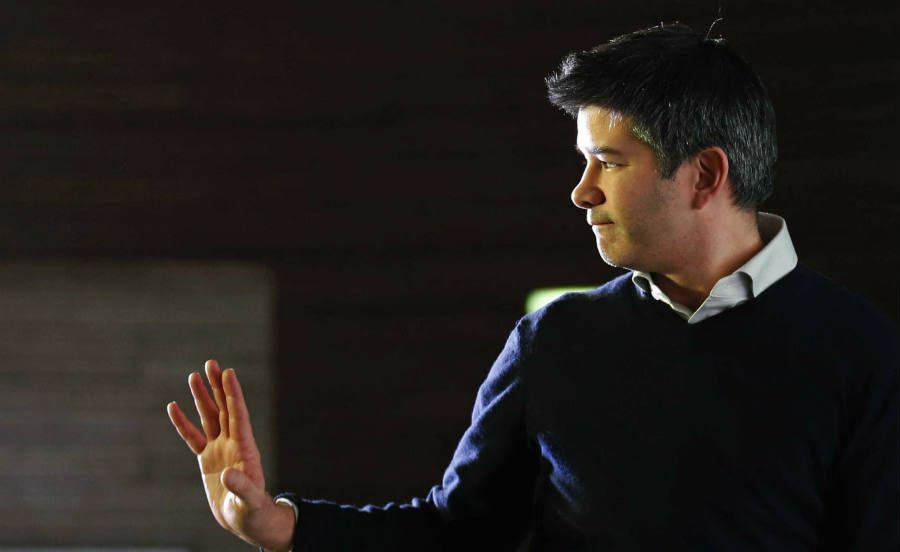On Tuesday, Uber CEO Travis Kalanick took a leave of absence following recommendations by Covington & Burling, a firm conducting an internal investigation on the company. The leadership crisis at Uber is the result of an ongoing wave of scandals and controversy.
Kalanick temporarily stepping aside is a move many saw coming when the storm was just starting to brew at the beginning of 2017. The executive was reportedly planning to take some time off already, so senior officials will take the helm of the company for the time being.
The institutional crisis of the ridesharing giant has made room for contenders like Waymo and Lyft to highlight their strengths in recent months. To better understand how this all happened, here is a chronology of events that led Uber to where it is now.
Everything started with a sex scandal
The incident that started the chain scandals happened back in February, when Susan J. Fowler, a site reliability engineer, published a personal retelling of her experience with sexual harassment at Uber.
According to Fowler, the manager made blatant moves on her and even described himself as being available and looking to hook up. She later learned that other coworkers had suffered the same treatment.
However, when she reported her manager to the HR department, they allegedly let it slide because he was a “top performer” and brought great results to the company. Those supervisors did nothing to stop the offender and changed female worker reports to avoid scandals, irony at its best.
Internal investigations and leadership exodus
After reading Fowler’s account on her somewhat popular blog, Travis Kalanick decided to take matters into his own hands and called for an internal investigation.
Uber’s employees, executives, practices, and reports were heavily scrutinized by Covington & Burling LLP, a law firm led by former U.S. Attorney General Eric Holder, who was also personally involved in the extensive review process.
Also in February, Google’s Waymo filed lawsuit against Uber claiming they had stolen tech IP of their proprietary LIDAR system and used it on their self-driving vehicles. Anthony Lewandowski, a former Waymo employee, now leading its own truck startup called Otto, was accused of being the thief.
During that time, several top executives parted ways with the controversial company. Uber’s President Jeff Jones left in March citing differences with the firm’s corporate culture and the environment. Brian McClendon, SVP of mapping and business, left around the same time to pursue a political career.
Devious business practices reached the public
It was around that same month when Uber was outed for using an illegal program called Greyball to keep themselves under authority radars. One of the company’s self-driving Volvo CX90 models crashed and flipped over in Tempe, Arizona, leading to a halt in test drives.
Later in April, it was revealed that Apple CEO Tim Cook had to scold Travis Kalanick two years ago over an iPhone tracking scheme found in their mobile app. Then, las month, the Department of Justice started a probe on the company over the use of Greyball.
May saw the departure of Gautam Gupta, Uber’s vice-president of finance, after reporting quarterly earnings with projected losses of billions of dollars by the end of the year. Lewandowski, who also led the self-driving division at the company, was fired at the end of the month.
Uber offices were full of bullying, sexual harassment, and discrimination
Covington’s investigations resulted in the termination of 20 people’s contracts in June, reacting to internal claim confirmations ranging from discrimination and sexual harassment to bullying, retaliation, and unprofessional behavior.
Among those leaving Uber by force was Eric Alexander, the company’s president of business for the Asia-Pacific region. The executive illegally got his hands on a rape victim’s medical records and shared them with other top officials because he did not believe a company driver was responsible for the incident.
Then, over the weekend, Eric Holder held a seven-hour meeting with board members and investors of the ride-hailing giant to discuss a series of recommendations stemming from his research experience over the last few months.
His proposals included reviewing and reallocating the responsibilities of Travis Kalanick as CEO, which presumably led him to announce his temporary departure from his position earlier this Tuesday. Other insights including increasing board oversight, imposing internal controls, and training workers better.
A byproduct of the meeting was also the resignation of Emil Michael as SVP of business for Uber. Investors described Kalanick’s right hand as a large part of the corporate culture issues of the firm.
There are almost no top executives left to run the company, yet Uber recently hired a new SVP of leadership and strategy, Frances Frei, and a new chief brand officer, Bozoma Saint John, to keep things afloat and reshape the image of the controversial business.
Source: Uber



